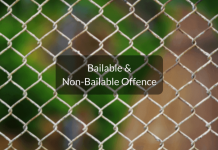This article is written by Gitika Jain pursuing BBA.LLB (Hons) from Amity University, Kolkata. This article deals exhaustively with the statistical application in criminal research.
Table of Contents
Introduction
There is no society that does not suffer from the problem of crime. In fact, the very grave social problem faced by every society is a crime. It may be considered as an omission of an act which is required by an individual to do or to commit some act which the law forbids. The use of statistics on crime and statistical analysis on criminal justice is very important for the government to be able to implement effective anti-crime programs and to protect the overall well being of the public at large and assess the social impact of public expenditures and policies. With the increase in globalised and interconnected world cyber crimes are even increasing and thus no one should underestimate the collection of criminal justice statistics. In order to sustain their respective criminal justice system, it is important for the country to collect a huge amount of data that relates to crimes, criminal profiles and social-economic, the political and geographical profiles of different countries. To generate debtors related to the criminal justice system the governments undertake both qualitative and quantitative techniques of research.
Statistical analysis tools are used to generate all the useful information for effective criminal justice decision making and policy research. The major social phenomenon of modern and civilized societies is a crime and it is a well-known fact that available statistics on crime includes only the arrested and convicted all the crime which is known to the eyes of police and judiciary but even these figures of statistics are not reliable because there are various crimes that are not registered in the eyes of law. Worldwide statistics on the incidence of crime provides a general rate of increase in female criminality in many countries. In countries of Maharashtra, Andhra Pradesh, Tamil Nadu, Assam, Kerala, West Bengal, Himachal Pradesh and Jammu and Kashmir official statistics for women crimes are higher than others.
In the statistical process, there is a huge use of numbers and information that finds out a situation which has some logical inference or conclusion involving both numeric figures as well as non-numeric facts. Therefore all the procedures and techniques that involve displaying, integrating, analysing and making decisions on the basis of data is called statistics. There are two types of statistics: descriptive and inferential. All the data that are gathered through the use of technology are very much needed to collect information. In various organisations and feels data mining activity is undertaken to convert all the data into useful information. For this, all the information systems of organisations depend on good statistics so that it generates reliability on the part of the users which serves a variety of purposes including planning and decision making.
Concept of the criminal justice system
Criminal justice statistics depend on the operation of the criminal justice system as stated by the United Nations document. The criminal justice system is classified into 5 categories namely: police, prosecutor courts, prison and non-custodial measures. The various sub-components of criminal justice branches are crimes, criminals and victims.
The component of police consists of state, regional National and local police units whose main tasks are to maintain peace and order. The crime-related issues are also looked after by various police agencies like issues related to traffic, tax violations, drugs, environmental crimes or executive protection.
The component of prosecutors includes various levels of a public prosecutor like government public defenders or private legal defence system.
The court components include general trial courts appellate court and court with special jurisdiction in matters like Juvenile courts and tax courts.
The component of prison includes punishment under penal system institutions like jails for pre-trial, presence for post-trial, a specialised institution for juveniles, sex offenders, insane, alcoholic and drug abusers. Probation and parole agencies are also included in this component.
The least documented component of the criminal justice system is the non-custodial component which varies from country to country and has a wide range of activities, facilities and dispositions. Fine incarceration treatment programs and community service orders are examples of it.
Scope
The statistical analysis is used in the criminal justice system to gather answers to the relevant questions and some data during the criminal investigation process. It is important to know the past and present uses of criminal justice statistics and the purpose for it to understand the scope of the criminal justice system. Various questions like how to use the data who receives the data you submit the data which data has been submitted and in what form and when all these are taken into consideration while considering what critical policy issues should be included in the formulation of any program in order to make it effective.
The following issues are included in the UN document containing an analysis of good justice statistics:
- Incidence of crime
- Characteristics and profile of the offenders
- The workload of the justice system
- Recidivism
- Human and physical resources expended
- A crime that relates to economic democracy and other data
- on what social and economic cost the crime has been committed
- The attitude of the citizen in general about the crime and criminal justice
- Characteristics of victims
The above-mentioned questions and concerns can be a starting point to form a comprehensive and exhaustive criminal justice statistics. the data obtained from such issues and questions should be transformed into information to make it practical and useful.
Statistical analysis and criminal justice research
As we all know that in order for the government to function effectively in implementing anti-crime programs and protecting the well-being of the public at large it is important to use statistics on crime and statistical analysis on criminal justice. The collection of reliable and exhaustive criminal justice statistics are very important in this age of rising cyber crimes and increasing globalised interconnected world. In order to sustain the respective states criminal justice system, various countries collect a huge amount of data that relate to crime criminal profiles and other political geographical and socio-economic profiles of different communities. exhaustive researchers are also being conducted to generate data and convert those data into information to make it useful and practical in the criminal justice system.
Administration of criminal justice system
All the private and public organisations rely on these Information systems in order to run their business functions smoothly. In huge organisations, this is the case whereas in the case of criminal justice systems many multilayer organisations require for reliable information that is obtained using statistical analysis to function in an effective manner and deliver criminal justice across the communities including the International Community which requires reliable information. For that matter, if we discuss effective management it includes all the efficient use of resources that are involved in criminal justice programs which requires sound valid and reliable information throughout the process.
The information gathered from data to meet the objectives on the goal of criminal justice programs allow criminal justice administrators to restrict themselves and work according to the public safety issues. Their jurisdiction of collection of data also includes personal budget facilities and equipment. The problem in implementing criminal justice programs includes the availability of regular statistical reports. The data are taken from the report of statistical analysis as a guide to solving the problems of many criminal aspects.
The process of crime and crime mapping includes the usage of geographical information systems and special statistics to find out the patterns of crime in society. Special analysis can be used to manipulate the data with the objective of deriving some sound patterns of criminal activities. One example of a statistical method to study the pattern of crime can be an index of concentration.
The criminal justice planning process
Planning is the most essential component in the criminal justice system and its administration. This process allows us to identify various alternative procedures to achieve certain goals. For example, a court administrator who wants to mitigate the processing time of a case but in an effective manner. Another example can be a prison administrator who wants a better-divided system for locating resources according to the needs of different categories. There are various planning steps:-
- The first step is to analyse the situation and identify the problem
- Then it boils down to setting out a clear objective or goal
- The third step is assessing and alternative courses of actions
- Next is to implement the plan of action
- Lastly to adopt such implemented plans on a regular basis and check upon whether it is fetching any goals.
Each of the above planning steps includes information that is gathered from sound statistical analysis which would not be effective without proper historical information.
Policy research and analysis
The most important area to impact the statistical analysis of criminal justice research is policy research and analysis. Policy analysis refers to something that finds out the effect of changes in policy procedure or in the environment and tries to make some appropriate strategies. An example can be a policy analyst trying to look for the effect of procedural changes on the criminal justice process when it has been undertaken by him to determine the level of increase in a judicial capacity and when in the process of case filing any changes occurs that reduces the average case time period by 5%. Another example that can be taken would be undertaking studies to find out the effect of a shift in crime rate on the workload of different elements of the criminal justice system.
Therefore a policy analysis can be categorised as either internal or external. By internal analysis, the main focus of the research question is on the shelf initiated policies or changes in the procedure of agency operations. External analysis, however, focuses on the effect on agencies from the changes in other agency policies and procedures or the effect it has on the environment. In both the analysis whether the changes are taken before or after statistical analysis needs to be undertaken anyhow.
Qualitative methodology
There are basically two methods to draw patterns of cyber economic crimes. The first one is a qualitative method. In this method, various analysis of data collected from sound statistical systems is used to understand the nature type and the extent of the crimes. Statistical analysis of the collected quantitative data also conducted to deeply understand the pattern of cybercrimes. For more reference graphs and charts are also used in this method.
Qualitative methodology
To understand the phenomenon of crimes in India this method is carried out which includes website materials reports of different agencies documents from different criminal justice systems and observations. It is helpful to study a detailed personal interview of the criminal parties and helps to deal with investigating agencies, prosecuting agencies, judiciary and academicians.
Difficulties and challenges
Collecting data true statistics for defining all the crimes satisfactorily and within the time frame is challenging as well as difficult because statistical data is not readily available. They need to be made available based on certain facts and circumstances of the case. For that purpose videos, experience and expertise are required. because of all these processes data collection becomes a time-consuming process.
Conclusion
Statistical enquiries clearly portray the increasing rate of crime every day. Crime is an important subject that needs to have some kind of special attention which can only be derived based on the results of sound statistical systems and accurate data is from which relevant information can be gathered and the rate of crime can be reduced to some extent slowly and gradually.
References
LawSikho has created a telegram group for exchanging legal knowledge, referrals and various opportunities. You can click on this link and join:
 Serato DJ Crack 2025Serato DJ PRO Crack
Serato DJ Crack 2025Serato DJ PRO Crack











 Allow notifications
Allow notifications



